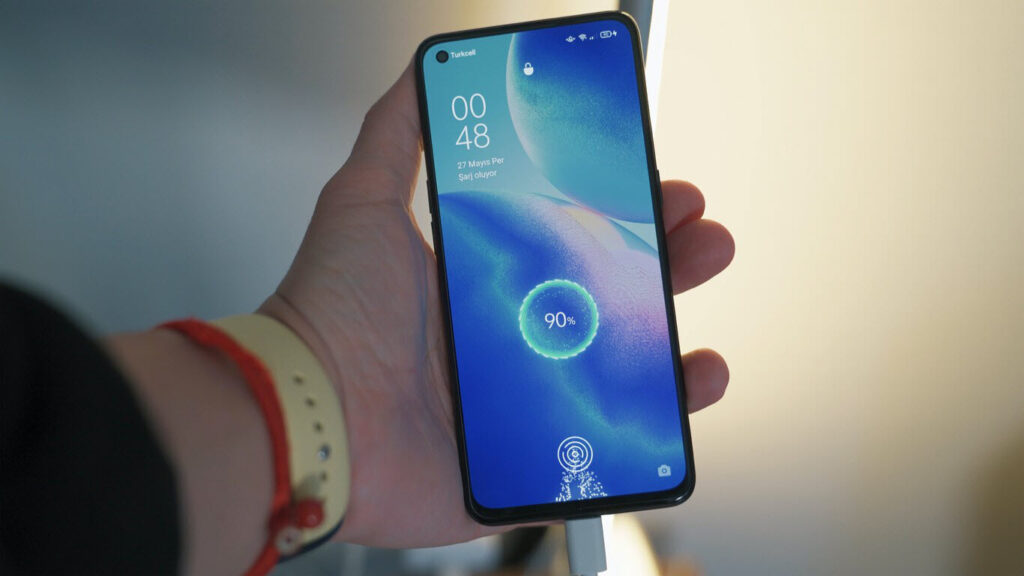Smartphones & Tablets | May 16, 2023

The 2010s in consumer technology were marked by the rise – and subsequent normalization – of the smartphone, which became an essential part of our lives overnight. To boost sales and differentiate themselves from competitors, manufacturers used various elements, from the megapixel race to screen size to battery milliampere-hours. In recent years, the battle has been fought in those same batteries, but not inside, but at the door, in the speed of their fast charging.
Oppo has been lifting weights in this field for some time now and took advantage of MWC 2022 to flex its muscles with an extremely fast charge, 240 watts as an evolution of its SuperVOOC technology. Earlier, Realme made a similar announcement, reaching 150 watts. At the end of the year, the Xiaomi Redmi Note 12 Pro+ in its Explorer edition reached 210W, a world record and power similar to that of a Crockpot.
Oppo completed this launch with a reassuring announcement, that of BHE (Battery Health Engine), the system that uses artificial intelligence to monitor the phone’s power supply and usage and charging patterns in order to extend its lifespan. The company claims it can even double the battery’s life.
The simultaneity of these announcements was not coincidental. After fast charging to exhausting levels (the market has moved towards charging as much as possible in very few minutes) there is a danger to the longevity of these batteries. And in a market that has also moved towards non-interchangeable soldered components, that is a problem for the entire device.
Fast charging increases heat and stress on components, both enemies of electronics (although some are avoiding at least the temperature increase). Is this dramatic? Not at all. But it is inevitable, at least for now. Lithium-ion batteries have been essentially the same for many years, and improvements that have brought greater autonomy (or the same autonomy doing many more things and powering hardware with greater demand) have come from processor efficiency and software management improvements of charging cycles, such as optimized charging, which assumes that batteries are subject to greater stress at the extremes of their capacity, so it is ideal to keep them between 20% and 80% whenever possible.
This software management is what makes this damage much less now than a few years ago. And it is what makes current fast charging systems reliable, although it is recommended not to abuse them. In other words, we should not get used to ultra-fast charging our phone on a daily basis, but rather have that charger as an option for the classic cases of arriving home with 10% battery and having just enough time for a shower before going out again, or being on a trip and having only twenty minutes of waiting time at an airport before having to leave. In those cases, ultra-fast charging is essential.
As for battery longevity, attitudes towards consumer technology are often pendulous. Fifteen years ago, certain fears were common (“Should I leave the charger plugged in for twelve hours on the new phone I just bought? Should I unplug the charger immediately when the battery reaches 100%?”) which gave way to a certain carelessness and improvisation that was consolidated with the rise of wireless charging. Now, certain fears are returning, especially when charging 100% of the battery in fifteen minutes makes us uneasy.
Oppo has integrated a control chip that regulates voltage, current, and temperature, as well as protecting the device from high temperatures with thirteen sensors distributed throughout its chassis. Xiaomi’s batteries follow a similar principle, promising that even when charged at 120 watts, they will withstand up to 800 charging cycles while maintaining 80% of their original capacity. Oppo’s current figures promise exactly twice as many cycles in the newly released Find X5.
Not bad at all that after the voltage war for ultra-fast charging comes the war for long-term safety and battery preservation after many cycles. This gives us reasons to use this technology with a little more peace of mind. Although it will always be a better idea to limit it to scenarios where it is really useful, because recent research insists that slower charging is better for less degradation.
Which has another nuance: if we want a battery that can handle fast charging, the separator between the cathode and anode must be larger, leaving less physical space for its capacity. That is, fast charging equals less capacity.
And there is also the fact of how long our smartphones last. Regardless of economic or environmental considerations, which are another conversation, most devices are replaced between two and three years after purchase, which increases the sense of using this ultra-fast charging without too many fears. It’s a different story for those who estimate the lifespan of their phone to be five or six years. In that case, not even the best intentions of Xiaomi, Oppo, OnePlus, or anyone else can prevent the degradation of their batteries. Although we can delay the suffering by avoiding fast charging directly. But we also have to live.